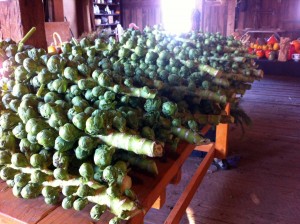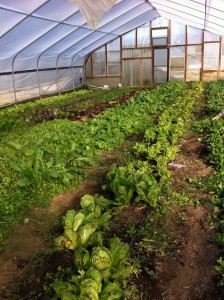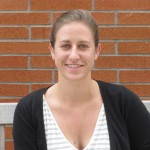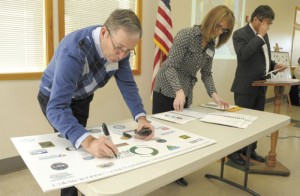 By Alex Paul, Albany Democrat-Herald
By Alex Paul, Albany Democrat-Herald
541-812-6114 or alex.paul@lee.net
SWEET HOME — Speaking in Chinuk wawa, the native language of the Grand Ronde tribe, Michael Karnosh said Monday afternoon that “his heart was very happy to be standing here today.”
Karnosh was one of several dozen stakeholders who formalized their commitment to the South Santiam Community Forest Corridor concept by signing a declaration of cooperation at the Jim Riggs Community Center.
The Grand Ronde, Siletz and Warm Springs tribes have all participated in and support the process.
Other participants have included representatives of state and federal agencies, universities, the city of Sweet Home and private landowners, who have spent the last two years developing a long-term vision for the corridor of mixed ownership lands between Sweet Home and Cascadia.
Thomas Maness, dean of the Oregon State University school of forestry emceed the event and was a co-convener along with Cynthia Solie of the project supported by Gov. Kitzhaber’s Oregon Solutions program.
“This is the culmination of a lot of hard work by a lot of people,” Maness said. “I’m proud to be a part of it.”
Maness said he sees three keys to success: effective leadership; courage to push forward; and persistence to overcome inevitable resistance from others.
The working group developed 12 key goals. Those goals include:
- Increasing the physical connection between Sweet Home and the Willamette National Forest via the South Santiam corridor.
- Helping improve the quality of life for local residents.
- Provide for public access to natural resources and the South Santiam River.
- Promote improved natural health through management and restoration actions within the watershed and implementation of conservation education programs.
Participants were invited to sign copies of the declaration of cooperation, as well as two posters featuring the logos of participating agencies or groups.
“This area has so many wonderful assets, now we have a process to knit them together,” said county commissioner Will Tucker. “I believe that the Cascadia cultural site (Cascadia Cave) should be considered a world heritage site. Linn County definitely wants to be a partner with Sweet Home.”
Jamie Damon of the Regional Oregon Solutions Team said she is especially interested in seeing the collaborative process succeed, because she’s from Estacada, a community much like Sweet Home in size, economic condition and proximity to the national forest and a major river.
“I’m excited to see what can be replicated, not only in Estacada, but in other communities across the state,” Damon said.
Oregon Solutions program manager Steve Bryant said he grew up in Albany and served as city manager there for many years, but he never realized “what was here.”
“The people of the Sweet Home area are deeply passionate about this community and its future,” Bryant said. “They have lived through tough times and want to build a future with different economics.”
He said Sweet Home is “ripe to take off … for others to discover this rich, abundant forest corridor.”
He called the document a “blueprint” for the future.
Dave Furtwangler is president of Cascade Timber Consulting, which manages more than 140,000 acres of timberlands in Linn County. He has been active in the process in part because the lands his company manages border state and federal lands and because the Cascadia Cave is on CTC property.
The cave was a meeting point for tribes for thousands of years and features drawings dating back centuries. Vandals have caused concerns for many years and Furtwangler said he hopes there is a way to move the cave into public ownership where it can be protected, yet open to the public on supervised tours.
Janet Quinn lives in the Cascadia area, which she said has “world class scenery.”
She praised the stakeholders for their hard work and added, she “can’t wait to see what happens.”
The Sweet Home All Lands Collaborative will serve as the governing structure for the corridor.
Sweet Home District Ranger Cindy Glick, who has been instrumental to the project since its inception, was unable to attend Monday’s signing event due to other work commitments, but Willamette National Forest Supervisor Meg Mitchell was present and said it was “amazing.”
“We are very committed to working across boundaries and land ownerships,” Whitman said. “It takes a lot to bring all three tribes to the table, plus all of the other groups.”
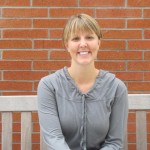 Laura Goodrich, a RARE AmeriCorps particpant (Resource Assistance for Rural Environments) placed in Sweet Home, Oregon is assisting with this new effort to organize a community forest for multiple social, economic, and ecological outcomes. The City of Sweet Home and a number of other entities, including the Sweet Home Economic Development Group, US Forest Service, South Santiam Watershed Council, Linn County Parks and Recreation have been participating in an Oregon Solutions project to develop a “South Santiam Community Forest Corridor”. Laura is directly providing much needed local community capacity building and assisting with the implementation of all agreements made through the Oregon Solutions process.
Laura Goodrich, a RARE AmeriCorps particpant (Resource Assistance for Rural Environments) placed in Sweet Home, Oregon is assisting with this new effort to organize a community forest for multiple social, economic, and ecological outcomes. The City of Sweet Home and a number of other entities, including the Sweet Home Economic Development Group, US Forest Service, South Santiam Watershed Council, Linn County Parks and Recreation have been participating in an Oregon Solutions project to develop a “South Santiam Community Forest Corridor”. Laura is directly providing much needed local community capacity building and assisting with the implementation of all agreements made through the Oregon Solutions process.


